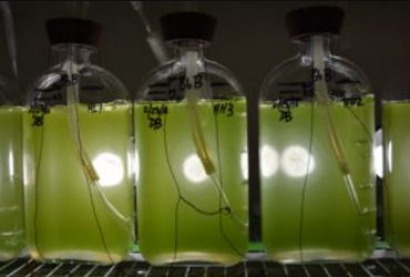
The report, in Genome Announcements, is the result of nearly seven years of research, according to Dr. Tim Devarenne, AgriLife Research biochemist and principal investigator in College Station.
“This alga is colony-forming, which means that a lot of individual cells grow to form a colony. These cells make lots of hydrocarbons and then export them into an extracellular matrix for storage,” Devarenne said. “And these hydrocarbons can be converted into fuels – gasoline, kerosene and diesel, for example, the same way that one converts petroleum into these fuels.”
Devarenne said his lab wants to understand not so much how to make fuel, but rather how the alga makes these hydrocarbons, what genes and enzymes are involved and how they function.
Sequencing the genome was important because it will help identify all the genes and enzymes in the genome needed for hydrocarbon production and control of this production
Only portions of the B. braunii genome are “spelled out” in the report so it is considered a draft genome, or first attempt at assembling all the pieces, according to Devarenne.
As more gaps are filled in, he said, a more complete genome will emerge, and that will help researchers dive deeper into the biochemical processes in this alga. That information will then help them understand how and why the organism makes hydrocarbons in very high quantities, how that process is regulated and what the particular biosynthetic pathways are used to make the hydrocarbons.
PHOTO CAPTION:
The genome of Botryococcus braunii, being studied for its potential for biofuel by Texas A&M AgriLife Research scientists in College Station, has been sequenced. (Texas A&M AgriLife Research photo by Kathleen Phillips)
For additional information:

